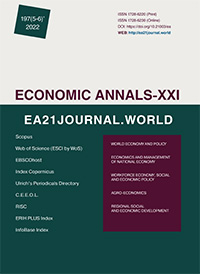Texture features extraction technology using grey level co-occurrence matrix for the k-nearest neighbor classification of citrus disease: an agro-economic analysis
Texture features extraction technology using grey level co-occurrence matrix for the k-nearest neighbor classification of citrus disease: an agro-economic analysis
Author(s): Wilis Kaswidjanti, Hidayatulah Himawan, Galih Wangi PutriSubject(s): National Economy, Micro-Economics, Agriculture
Published by: Institute of Society Transformation
Keywords: Gray Level Co-Occurrence Matrix; K-Nearest Neighbour; Classification; Extraction Technology; Agro-economic Analysis;
Summary/Abstract: The citrus disease is a problem affecting the decrease of agricultural commodity yields. One way to determine disease in citrus is through the leaves. Leaves, as a place for photosynthesis, with the disease will cause stunted plant growth. This study revolves around an Agro-economic Analysis to classify citrus diseases based on leaf images by applying the Gray Level Co-occurrence Matrix (GLCM) extraction technology using K-Nearest Neighbor (KNN). To meet that aim, Otsu Thresholding segmentation is carried out to separate the disease’s image from the healthy leaves. This experiment was carried out in Yogyakarta, Indonesia over the year 2020, and 345 leaves were collected and divided into three classes: canker, greening, and healthy. Citrus disease classification has four main stages, namely pre-processing, segmentation, feature extraction, and classification. Comparisons are made based on the normalization of the dataset and the KNN distance used. Given the results, dataset without normalization gets the best results with Hassanat distance KNN (k = 29) with an accuracy of 91.86%. A dataset with normalization receives the best results at Euclidean distance (k = 7) with an accuracy of 98.84%. These results affirm the efficiency of this the method in distinguishing diseases. As a result, this study can contribute to improving the quality of crops and reducing unnecessary expenses of pesticides, and finally could play a role in the economics of development.
Journal: Економічний часопис - ХХІ
- Issue Year: 197/2022
- Issue No: 5-6
- Page Range: 37-44
- Page Count: 8
- Language: English

